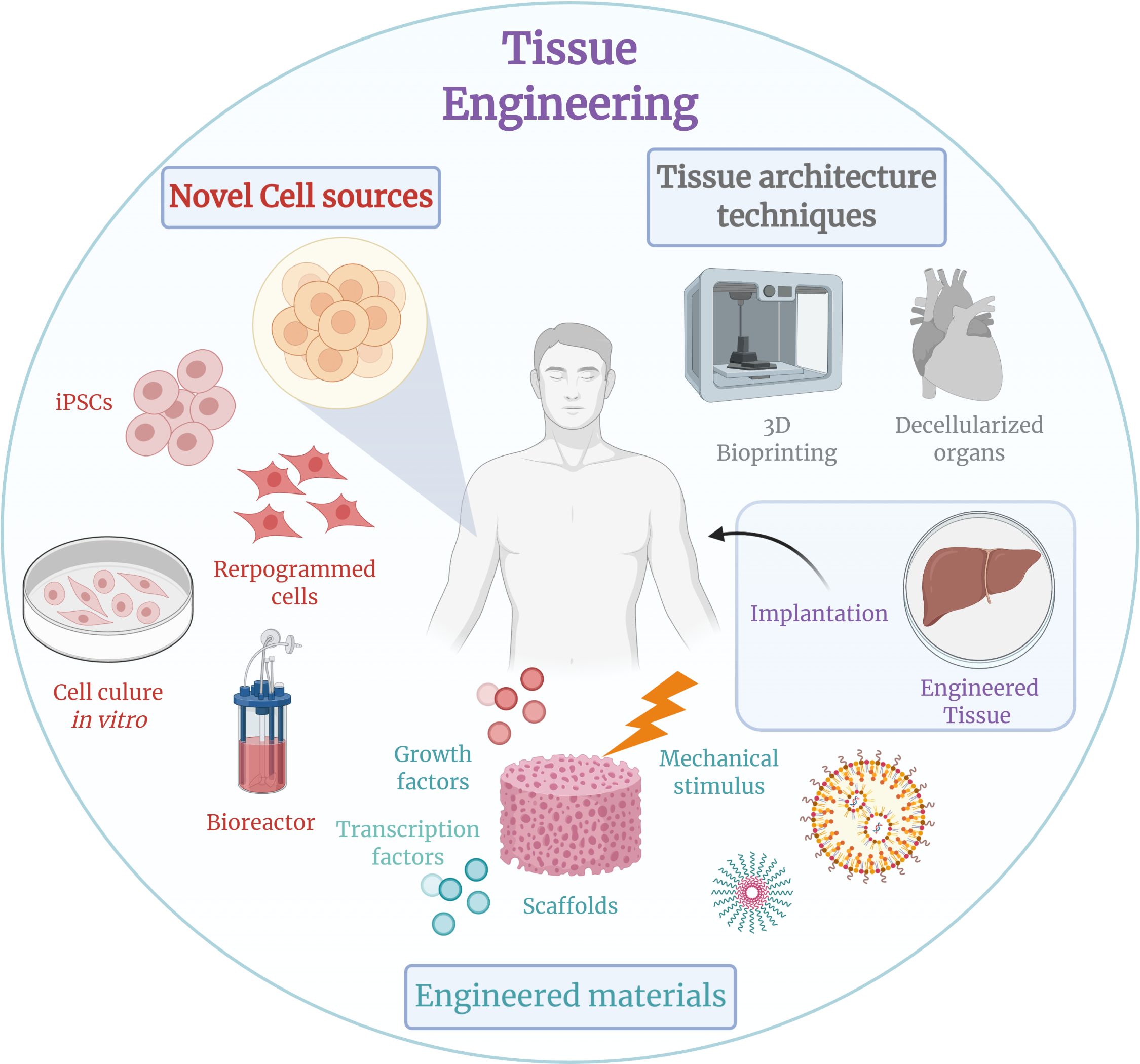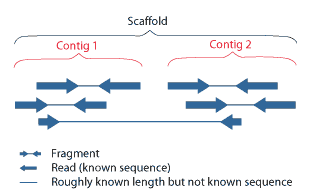|
Scaffold (other)
A scaffold, or scaffolding, in construction, is a temporary structure that supports workers and equipment above the ground or floor. Scaffold and scaffolding may also refer to: Structures * Scaffold (execution site), a raised, stage-like site for public executions * Scaffold (barn), a raised structure on which crops are stored Science and technology * Scaffold (chemistry), the core structure of a compound or a class of compounds * Scaffold protein, a regulator of some signalling pathways * Scaffold, a protein that is used as a starting point for the design of antibody mimetics * Tissue scaffold, in tissue engineering, an artificial structure capable of supporting three-dimensional tissue formation ** Nano-scaffold, a medical process * Scaffolding (bioinformatics), a technique in bioinformatics * Scaffold (programming), two techniques in software architecture Arts and entertainment * The Scaffold, an English music and comedy group * "The Scaffold", song by Elton John from ' ... [...More Info...] [...Related Items...] OR: [Wikipedia] [Google] [Baidu] |
Scaffold
Scaffolding, also called scaffold or staging, is a temporary structure used to support a work crew and materials to aid in the construction, maintenance and repair of buildings, bridges and all other man-made structures. Scaffolds are widely used on site to get access to heights and areas that would be otherwise hard to get to. Unsafe scaffolding has the potential to result in death or serious injury. Scaffolding is also used in adapted forms for formwork and shoring, grandstand seating, concert stages, access/viewing towers, exhibition stands, ski ramps, half pipes and art projects. There are five main types of scaffolding used worldwide today. These are Tube and clamp scaffold, tube and coupler (fitting) components, prefabricated modular system scaffold components, H-frame / façade modular system scaffolds, timber scaffolds and bamboo scaffolds (particularly in China and India). Each type is made from several components which often include: * A base jack or plate which is a lo ... [...More Info...] [...Related Items...] OR: [Wikipedia] [Google] [Baidu] |
Scaffold (execution Site)
A scaffold (french: échafaud, german: Schafott) is a raised, stage-like site for public executions. The execution was practised in public places. The "public spectacle" character of the execution was meant to deter the people from committing crimes, and demonstrate the authority of the Government, while simultaneously acting as a form of entertainment for the masses. For this purpose, the scaffold was often higher than a podium setup, and was therefore also called scaffold. Initially, beheading by an executioner was usually performed with a sword, axe, or hatchet, later executions were sometimes performed with a guillotine A guillotine is an apparatus designed for efficiently carrying out executions by beheading. The device consists of a tall, upright frame with a weighted and angled blade suspended at the top. The condemned person is secured with stocks at t ... instead. Scaffold in Hanau, Germany In the Wolfgang district of Hanau, on the grounds of the old Ar ... [...More Info...] [...Related Items...] OR: [Wikipedia] [Google] [Baidu] |
Scaffold (barn)
Scaffold in a barn A barn is an agricultural building usually on farms and used for various purposes. In North America, a barn refers to structures that house livestock, including cattle and horses, as well as equipment and fodder, and often grain.Allen ... are loosely laid poles or joists generally above the drive floor on which crops are piled. The term has the same meaning of a temporary, elevated platform in other uses of the word.Gardner, D. P.. "Barn". ''The farmer's dictionary: a vocabulary of the technical terms recently introduced into agriculture and horticulture from various sciences, and also a compendium of practical farming : the latter chiefly from the works of the Rev. W.L. Rham, Loudon, Low and...'' New York: Harper & Brothers, 1846. Print. References {{reflist Barns ... [...More Info...] [...Related Items...] OR: [Wikipedia] [Google] [Baidu] |
Scaffold (chemistry)
Scaffolding, also called scaffold or staging, is a temporary structure used to support a work crew and materials to aid in the construction, maintenance and repair of buildings, bridges and all other man-made structures. Scaffolds are widely used on site to get access to heights and areas that would be otherwise hard to get to. Unsafe scaffolding has the potential to result in death or serious injury. Scaffolding is also used in adapted forms for formwork and shoring, grandstand seating, concert stages, access/viewing towers, exhibition stands, ski ramps, half pipes and art projects. There are five main types of scaffolding used worldwide today. These are Tube and clamp scaffold, tube and coupler (fitting) components, prefabricated modular system scaffold components, H-frame / façade modular system scaffolds, timber scaffolds and bamboo scaffolds (particularly in China and India). Each type is made from several components which often include: * A base jack or plate which is a lo ... [...More Info...] [...Related Items...] OR: [Wikipedia] [Google] [Baidu] |
Scaffold Protein
In biology, scaffold proteins are crucial regulators of many key signalling pathways. Although scaffolds are not strictly defined in function, they are known to interact and/or bind with multiple members of a signalling pathway, tethering them into complexes. In such pathways, they regulate signal transduction and help localize pathway components (organized in complexes) to specific areas of the cell such as the plasma membrane, the cytoplasm, the nucleus, the Golgi, endosomes, and the mitochondria. History The first signaling scaffold protein discovered was the Ste5 protein from the yeast ''Saccharomyces cerevisiae''. Three distinct domains of Ste5 were shown to associate with the protein kinases Ste11, Ste7, and Fus3 to form a multikinase complex. Function Scaffold proteins act in at least four ways: tethering signaling components, localizing these components to specific areas of the cell, regulating signal transduction by coordinating positive and negative feedb ... [...More Info...] [...Related Items...] OR: [Wikipedia] [Google] [Baidu] |
Antibody Mimetic
Antibody mimetics are organic compounds that, like antibodies, can specifically bind antigens, but that are not structurally related to antibodies. They are usually artificial peptides or proteins with a molar mass of about 3 to 20 kDa. (Antibodies are ~150 kDa.) Nucleic acids and small molecules are sometimes considered antibody mimetics as well, but not artificial antibodies, antibody fragments and fusion proteins composed from these. Common advantages over antibodies are better solubility, tissue penetration, stability towards heat and enzymes, and comparatively low production costs. Antibody mimetics are being developed as therapeutic and diagnostic Diagnosis is the identification of the nature and cause of a certain phenomenon. Diagnosis is used in many different disciplines, with variations in the use of logic, analytics, and experience, to determine " cause and effect". In systems engine ... agents. Examples See also * Protein mimetic * Optimer Ligand Re ... [...More Info...] [...Related Items...] OR: [Wikipedia] [Google] [Baidu] |
Tissue Scaffold
Tissue engineering is a biomedical engineering discipline that uses a combination of cells, engineering, materials methods, and suitable biochemical and physicochemical factors to restore, maintain, improve, or replace different types of biological tissues. Tissue engineering often involves the use of cells placed on tissue scaffolds in the formation of new viable tissue for a medical purpose but is not limited to applications involving cells and tissue scaffolds. While it was once categorized as a sub-field of biomaterials, having grown in scope and importance it can be considered as a field of its own. While most definitions of tissue engineering cover a broad range of applications, in practice the term is closely associated with applications that repair or replace portions of or whole tissues (i.e. bone, cartilage, blood vessels, bladder, skin, muscle etc.). Often, the tissues involved require certain mechanical and structural properties for proper functioning. The term has a ... [...More Info...] [...Related Items...] OR: [Wikipedia] [Google] [Baidu] |
Nano-scaffold
Nano-scaffolding or nanoscaffolding is a medical process used to regrow tissue and bone, including limbs and organs. The nano-scaffold is a three-dimensional structure composed of polymer fibers very small that are scaled from a Nanometer (10−9 m) scale. Developed by the American military, the medical technology uses a microscopic apparatus made of fine polymer fibers called a scaffold. Damaged cells grip to the scaffold and begin to rebuild missing bone and tissue through tiny holes in the scaffold. As tissue grows, the scaffold is absorbed into the body and disappears completely. Nano-scaffolding has also been used to regrow burned skin. The process cannot grow complex organs like hearts. Historically, research on nano-scaffolds dates back to at least the late 1980s when Simon showed that electrospinning could be used to produce nano- and submicron-scale polymeric fibrous scaffolds specifically intended for use as ''in vitro'' cell and tissue substrates. This early use of elec ... [...More Info...] [...Related Items...] OR: [Wikipedia] [Google] [Baidu] |
Scaffolding (bioinformatics)
Scaffolding is a technique used in bioinformatics. It is defined as follows: Link together a non-contiguous series of genomic sequences into a scaffold, consisting of sequences separated by gaps of known length. The sequences that are linked are typically contiguous sequences corresponding to read overlaps. When creating a draft genome, individual reads of DNA are second assembled into contigs, which, by the nature of their assembly, have gaps between them. The next step is to then bridge the gaps between these contigs to create a scaffold. This can be done using either optical mapping or mate-pair sequencing. Assembly software The sequencing of the ''Haemophilus influenzae'' genome marked the advent of scaffolding. That project generated a total of 140 contigs, which were oriented and linked using paired end reads. The success of this strategy prompted the creation of the software, Grouper, which was included in genome assemblers. Until 2001, this was the only scaffolding soft ... [...More Info...] [...Related Items...] OR: [Wikipedia] [Google] [Baidu] |
Scaffold (programming)
Scaffolding, as used in computing, refers to one of two techniques: The first is a code generation technique related to database access in some model–view–controller frameworks; the second is a project generation technique supported by various tools. Code generation Scaffolding is a technique supported by some model–view–controller frameworks, in which the programmer can specify how the application database may be used. The compiler or framework uses this specification, together with pre-defined code templates, to generate the final code that the application can use to create, read, update and delete database entries, effectively treating the templates as a "scaffold" on which to build a more powerful application. Scaffolding is an evolution of database code generators from earlier development environments, such as Oracle's CASE Generator, and many other 4GL client-server software development products. Scaffolding was made popular by the Ruby on Rails framework. It has b ... [...More Info...] [...Related Items...] OR: [Wikipedia] [Google] [Baidu] |
The Scaffold
The Scaffold were a comedy, poetry and music trio from Liverpool, England, consisting of musical performer Mike McGear (real name Peter Michael McCartney, the brother of Paul McCartney), poet Roger McGough and comic entertainer John Gorman. Career Overview From as early as 1962, the members of The Scaffold were part of a performing revue group known as The Liverpool One Fat Lady All Electric Show. ("One Fat Lady" is the bingo term for 8 and the performers mostly lived in the Liverpool 8 district.) McGough's fellow Liverpool poet Adrian Henri was also a founding member of this early configuration. Working almost exclusively as a trio under the name The Scaffold from 1964, Gorman, McGear and McGough performed a mixture of comic songs, comedy sketches and the poetry of McGough (as evidenced on their 1968 live album), and they released a number of singles and albums on Parlophone and EMI between 1966 and 1971, with several more on Island, Warner Bros. and Bronze thereafter. The ... [...More Info...] [...Related Items...] OR: [Wikipedia] [Google] [Baidu] |
Empty Sky
''Empty Sky'' is the debut studio album by British singer-songwriter Elton John, released on 6 June 1969. It was not issued in the United States until January 1975 (on MCA), with different cover art, well after John's fame had been established internationally. Background Recorded during the winter of 1968 and spring of 1969 in a DJM Records 8-track studio, ''Empty Sky'' is the only album in the early part of Elton John's career not produced by Gus Dudgeon, instead helmed by friend and DJM staffer Steve Brown. The album was released in the UK in both stereo and mono, the latter now being a rare collector's item. John plays harpsichord on several tracks, including "Skyline Pigeon", which John has described as being "the first song Bernie and I ever got excited about that we ever wrote." John used musicians who were friends either of him or of Brown. Guitarist Caleb Quaye and drummer Roger Pope, both at the time members of the band Hookfoot, played on many of the tracks. (Qua ... [...More Info...] [...Related Items...] OR: [Wikipedia] [Google] [Baidu] |





